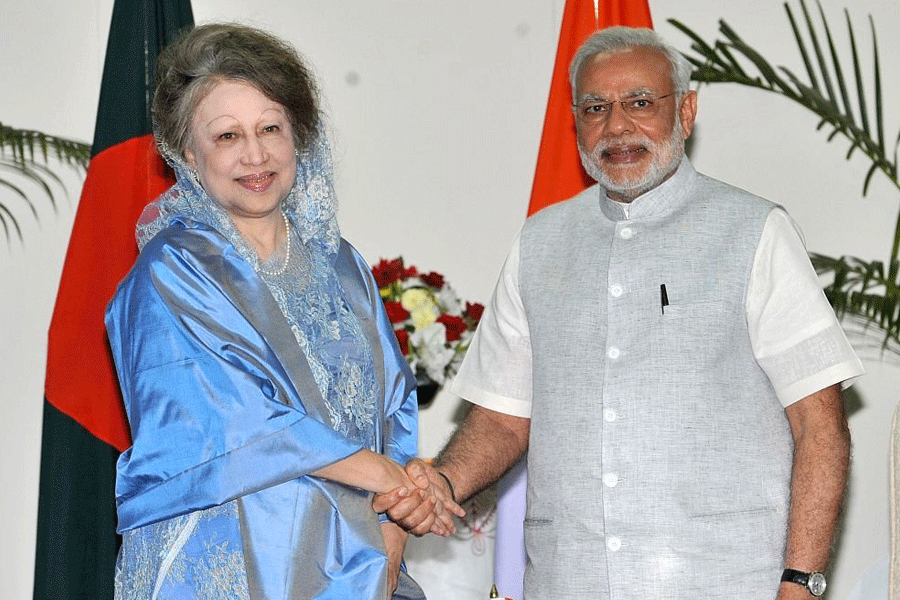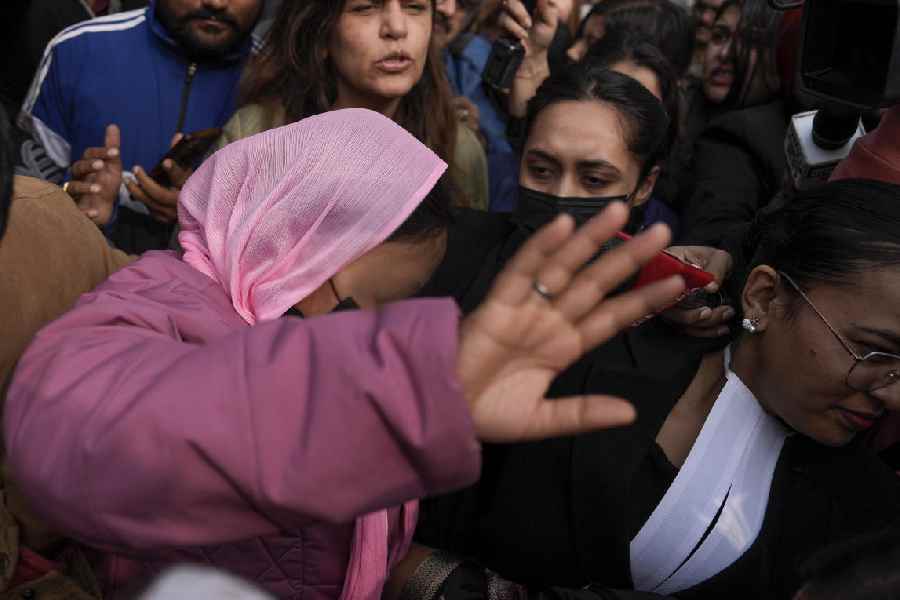 |
 |
 |
 |
 |
| Scenes from the Sisupalgarh excavation site and Chudangagagarh, inside Chudanga Reserve Forest. Many parts of Sisupalgarh, which was excavated in 1947-1948 by the Archaeological Survey of India (ASI), may very well remain only in the pages of history as unauthorised constructions and development activities are set to irreparably damage it. Pictures by Sanjib Mukherjee |
Bhubaneswar, Aug. 29: A visit to Sisupalgarh takes one several ages into the past. Speaking volumes about the historical importance of the ancient urban site near Bhubaneswar, German professor Paul Yule of the University of Heidelberg said: “We have one Sisupalgarh in the entire world and we have to preserve it.’’
Surprisingly, many parts of the fort, which were excavated in 1947-1948 by the Archaeological Survey of India (ASI), may remain only in the pages of history as unauthorised constructions and development activities are set to irreparably damage it.
Before that happens, you should pack your backpack and visit this fort near Samantarapur on the outskirts of the city. The fort is situated about 5 km from the railway station and 10 km from the airport.
Apart from Prof. Yule, several other experts including Wolfgard Boehler and Monica Bordas Vicent of the University of Applied Sciences, Mainz, Germany, architect Coriana Borchert, Prof. Rabi Mohanty of the department of archaeology, Deccan College of Pune and Monica L. Smith of Costen Institute of Archaeology, University of California, have worked hard to preserve the historic site.
“Sisupalgarh, named a national monument by many scholars, is a historic fort. It has a 2000-year-old quadratic defensive wall, measuring 1,200x1,160 metres and portions of the surviving wall come are as high as 12 metres. A Mauryan period site, the tall pillars, some old walls and structures are still there to see,’’ says Yule and Borchert in one of their articles on the fort.
“It is a shame to see Sisupalgarh go the same way as the Ashokan-era Jaugada in the nearby Ganjam district of Orissa, which is only recognised as a fort by a few experts now. Nearer to Sisupalgarh, 500 metre to the north-west at Mahabhoi Sasan, an ancient mud fort has also fallen victim to the land grabbing mechanism,’’ says the report.
Bijay Kumar Rath, former state archaeologist, said: “ASI had put the time of the fort of Sisupalgarh between 300 BC and 300 AD and the survey had placed the development of the region in three periods or phases. Excavation had to be abandoned as the excavators hit the groundwater level at that time. Nearly 1 sq km area was excavated and the ‘Rani Uasa’ (Queen’s palace) still stands tall with its pillared structures in all its glory.’’
“However, with no protection measure or notification, land sharks were active and apart from the Bhubaneswar Development Authority, local officials like block development officers were responsible for the irregularities as they granted permission to the structures inside and near the fort,’’ he said. “As per my own study and observation, Sisupalgarh must be a 1,200 BC structure as black and red pottery was also discovered from here showing its south Indian megalithic characteristics. All other southern monuments were, however, excavated much after Sisupalgarh was found by ASI,’’ he added.
“In the early eighties, former ASI chief and original excavator of Sisupalgarh, B.B. Lal, was in Bhubaneswar to see his old excavation site. He also admitted that the 300 BC to 350 AD timeline declared by ASI may be extended much more on both sides,’’ Rath said. Stating that the Hati Gumpha (Elephant Cave) inscription of Udayagiri in Bhubaneswar says that the Sisupalgarh area was the Kalinga Nagar of Kharvela’s capital city, Rath said even his own research has indicated that there was an amphitheatre in the north-west side of the walled structure near Mahabhoi Sasan. “But with the remains of the structure is nowhere to be seen today,’’ he said, adding that the state government should immediately take steps so that the remaining portions of the fort could be excavated soon.
Archaeological sites tell us many things about our past and the new generation can observe the past through historical sites such as Sisupalgarh. Thus, this site could be a great place for school and college students to visit and learn about Orissa’s history.
“The recent decision by the Orissa government to resume excavation work at Sisupalgarh by ASI is a welcome step. It will also increase tourism potential of the city which is an ancient epicentre of cultural and architectural development,’’ said travel consultant Debasish Mahapatra of K7 Travels.
A recent meeting chaired by chief minister Naveen Patnaik decided to free Sisupalgarh of land mafia and develop the entire region as a preserved archaeological site of international standards.
Apart from Sisupalgarh, there are two other fort ruins on the city outskirts. Both are now inside the area of the Chandaka Dampara Sanctuary (CDS).
Bualigarh & Chudangagarh: Bualigarh Fort was perhaps built by Chodagangadev during 1078-1147 AD. The ruins of this fort are inside CDS limits. Chudangagagarh is also found inside Chudanga Reserve Forest. It was named after Chodagangadev. It is an 11th century structure built by rulers of the Ganga dynasty.
Sisupalgarh: 5 km from Bhubaneswar railway station, 10 km from Biju Patnaik Airport
● 1000-2000 years old quadratic defensive wall measuring 1200 metre X 1160 metre
●Other structures like pillars, remains of basement, walls can be seen
To stay: Hotels, but luxury and budget types, Panthnivas and Yatrinivas
Travel: By taxi, cars, luxury coaches for groups and autorickshaws for two Bualigarh & Chudangagarh: Inside Chandaka Dampara Sanctuary, 25 km from rly station and 30 km from airport










